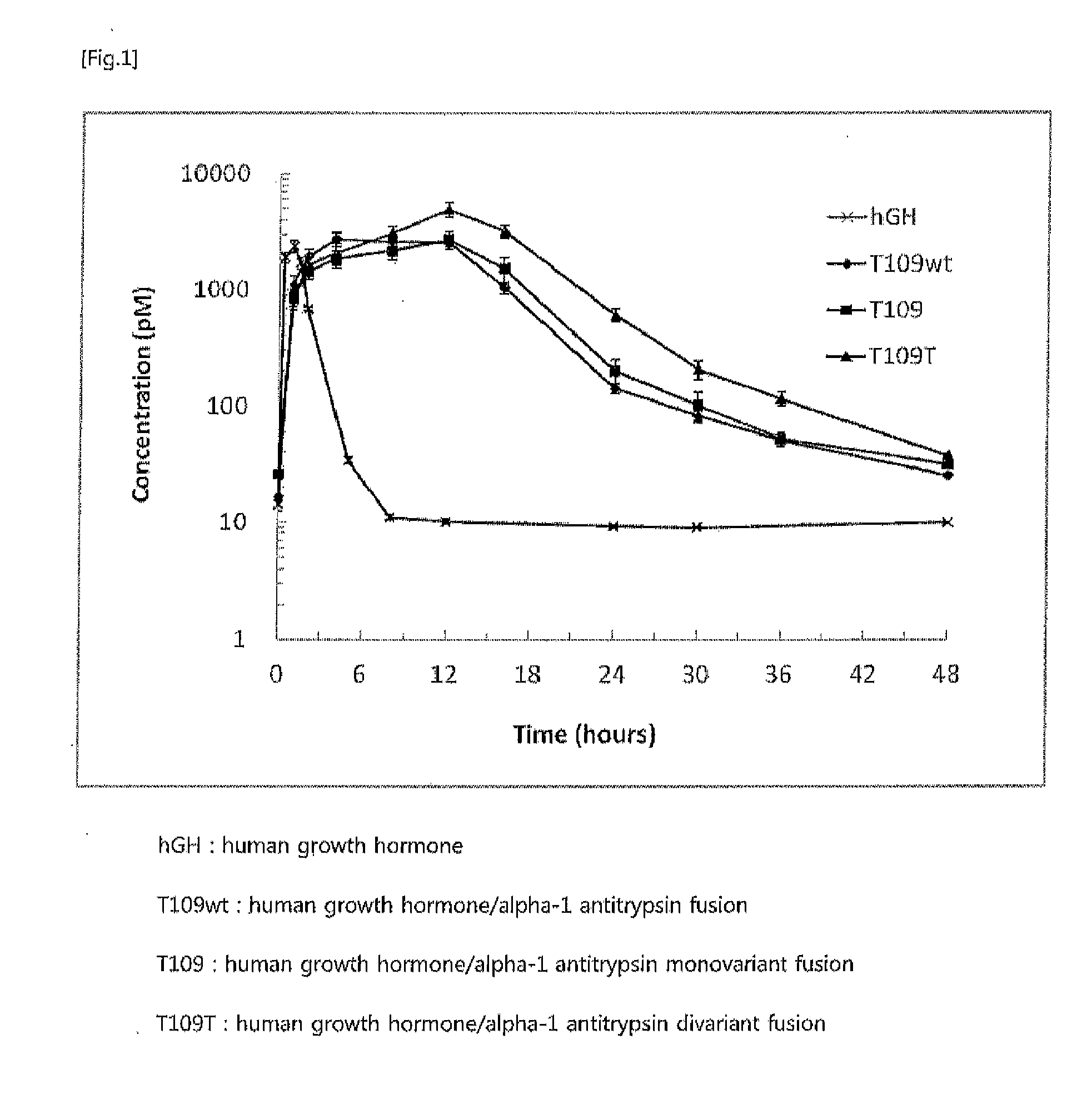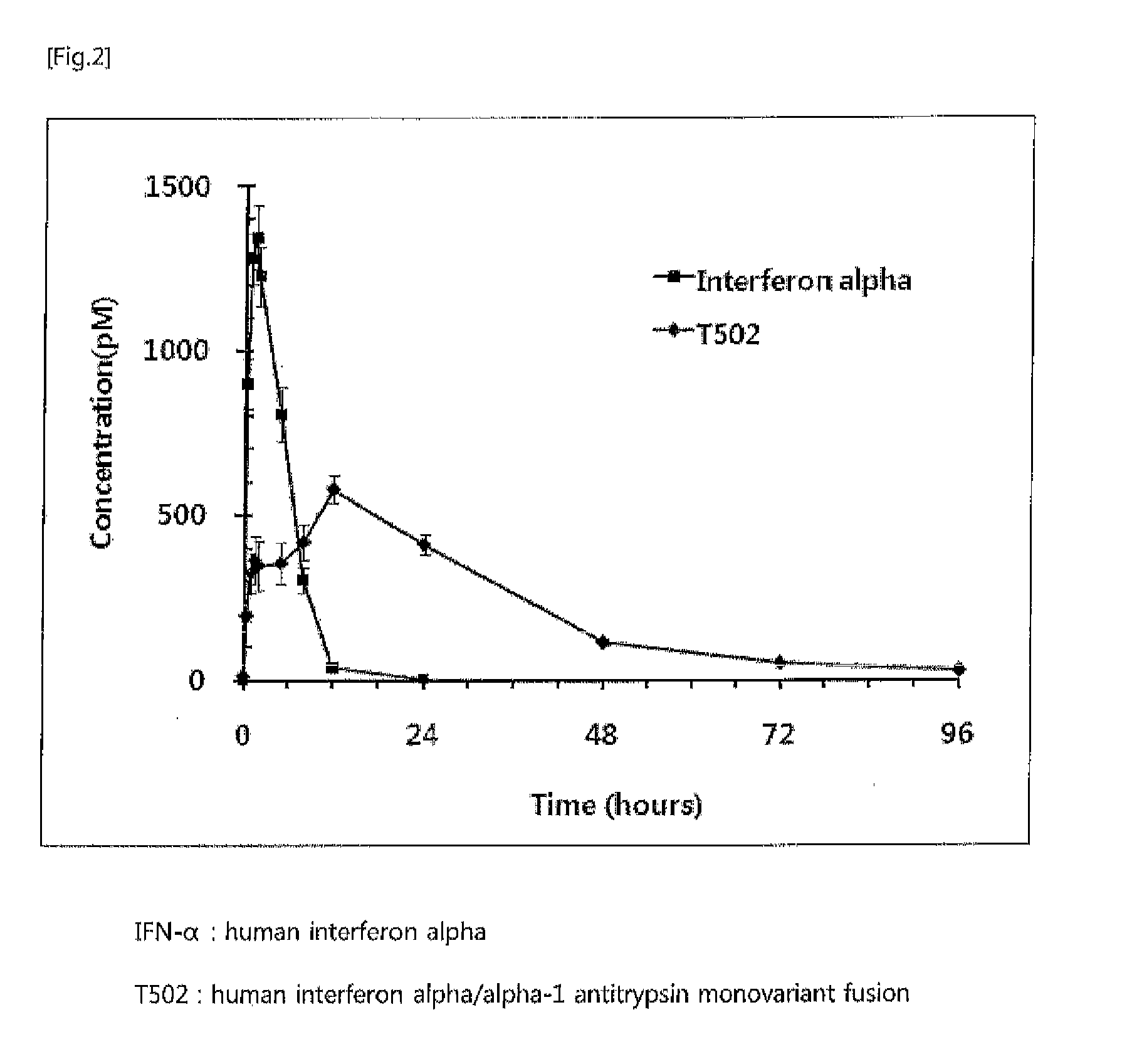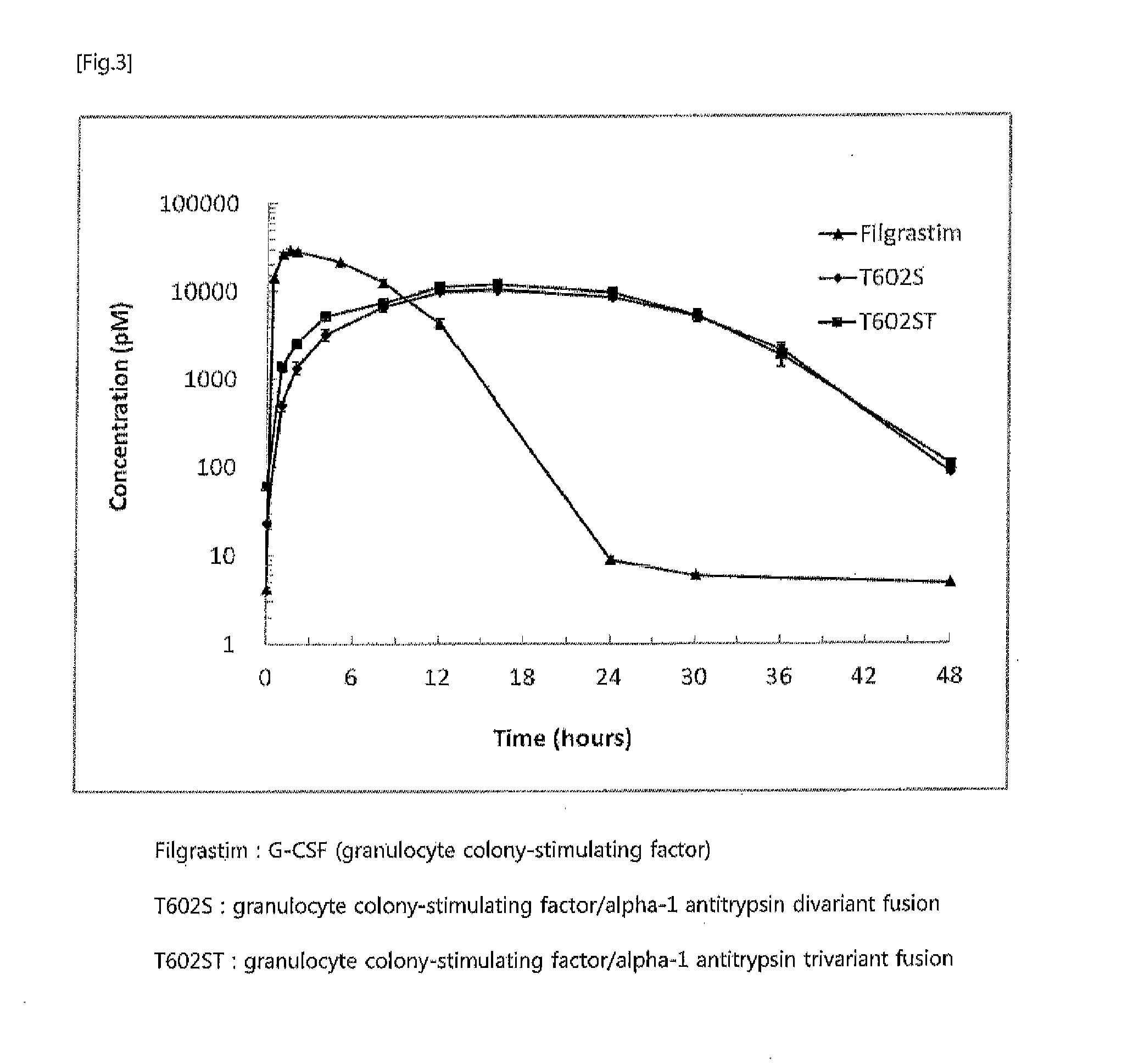In vivo half life increased fusion protein or peptide maintained by sustained in vivo release, and method for increasng in vivo half-life using same
a technology of in vivo release and fusion protein, which is applied in the direction of peptides, enzyme stabilisation, peptides/protein ingredients, etc., can solve the problems of unfavorable economic situation, undesired immune responses, and undesirable residual presence of toxic chemical derivaties
- Summary
- Abstract
- Description
- Claims
- Application Information
AI Technical Summary
Benefits of technology
Problems solved by technology
Method used
Image
Examples
example 1
Preparation of Human Growth Hormone / Alpha-1 Antitrypsin Fusion [T109wt: α1AT / hGH]
[0057]1. Construction of Expression Vector, pSNAT
[0058]For use in the expression of human growth hormone fused to the C-terminus of alpha-1 antitrypsin, the expression vector pSNAT which carried alpha-1 antitrypsin was constructed. In detail, alpha-1 antitrypsin gene was obtained from the vector hMU001448 (KRIBB) by PCR using a pair of primers ALT21 (SEQ ID NO: 8) and ALT30 (SEQ ID NO: 9), which were designed to fuse human growth hormone to the C-terminus of alpha-1 antitrypsin. The primer ALT30 was also designed to have a linker which would give flexibility necessary for the maintenance of the fusion proteins. The amplified nucleotide was digested with two restriction enzymes XhoI and BamHI and cloned into pSGHVO (GenBank Accession No. AF285183) resulting in a recombinant vector, called pSNAT.
[0059]2. Construction of Human Growth Hormone / Alpha-1 Antitrypsin Vector [T109wt, α1AT / hGH]
[0060]A human growth...
example 2
Preparation of Human Growth Hormone / Alpha-1 Antitrypsin Monovariant Fusion [T109: α1AT(P357N) / hGH]
[0065]1. Preparation of Alpha-1 Antitrypsin Monovariant (pDHT3N Cloning Vector)
[0066]Because alpha-1 antitrypsin used for a fusion carrier in the fusion molecule has an inhibitory activity itself, the inhibitor activity of alpha-1 antitrypsin was substantially decreased by making a variant of alpha-1 antitrypsin. In this regard, an alpha-1 antitrypsin gene was amplified from the vector hMU001448 (KRIBB) by PCR, and cloned into the yT&A vector to produce a recombinant vector pDHT3. Afterwards, substitution mutation of the proline residue at position 357 of P2 with asparagine for N-glycosylation was performed using a pair of primers ALT1 (SEQ ID NO: 12) and ALT2 (SEQ ID NO: 13) with the aid of a mutagenesis kit (Stratagene, QuikChange II Cat No. 200523-5) to produce a cloning vector pDHT3N.
[0067]2. Construction of Expression Vector pSNATN
[0068]For use in the expression of human growth hor...
example 3
Preparation of Human Growth Hormone / Alpha-Antitrypsin Divariant Fusion [T109T: α1AT(P357N, S359T) / hGH]
[0075]1. Preparation of Alpha-1 Antitrypsin Divariant (pDHT3NT Cloning Vector)
[0076]For use in the preparation of inactivated alpha-1 antitrypsin by introduction of glycosyaltion site at the active site of the molecule, alpha-1 antitrypsin was double mutated to decrease its activity and achieve the homogeneity of glycosylation. In this regard, substitution of the serine residue at position 359 with threonine for homogeneity of glycosylation formation was performed on the N-glycosylation-induced pDHT3N cloning vector which carries the alpha-1 antitrypsin monovariant which was decreased in activity by mutating proline at position 357 of P2 into asparagine, using a pair of primers ALT82 (SEQ ID NO: 15) and ALT83 (SEQ ID NO: 16) with the aid of a mutagenesis kit (Enzynomics, EZchange Cat No. EM020) to produce a cloning vector, called pDHT3NT.
[0077]2. Construction of Expression Vector pS...
PUM
| Property | Measurement | Unit |
|---|---|---|
| molecular weight | aaaaa | aaaaa |
| pH | aaaaa | aaaaa |
| pH | aaaaa | aaaaa |
Abstract
Description
Claims
Application Information
 Login to View More
Login to View More - R&D
- Intellectual Property
- Life Sciences
- Materials
- Tech Scout
- Unparalleled Data Quality
- Higher Quality Content
- 60% Fewer Hallucinations
Browse by: Latest US Patents, China's latest patents, Technical Efficacy Thesaurus, Application Domain, Technology Topic, Popular Technical Reports.
© 2025 PatSnap. All rights reserved.Legal|Privacy policy|Modern Slavery Act Transparency Statement|Sitemap|About US| Contact US: help@patsnap.com



